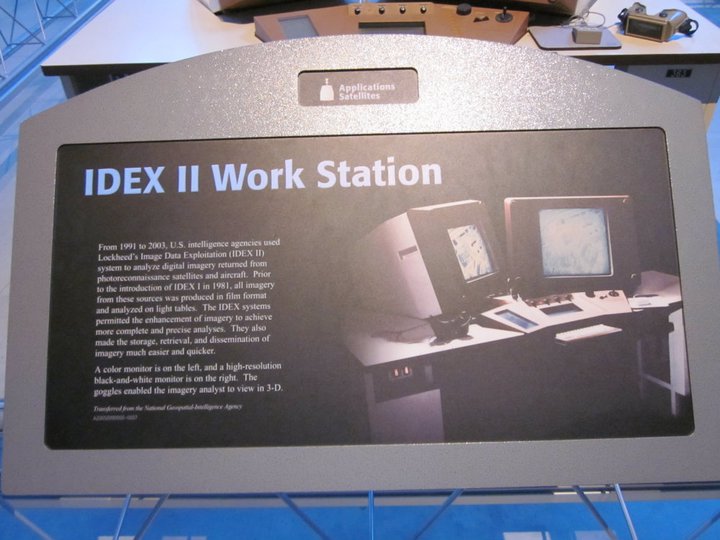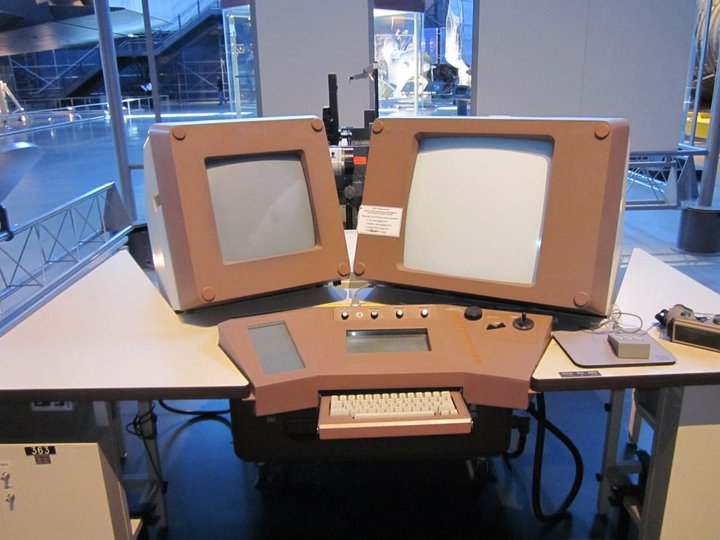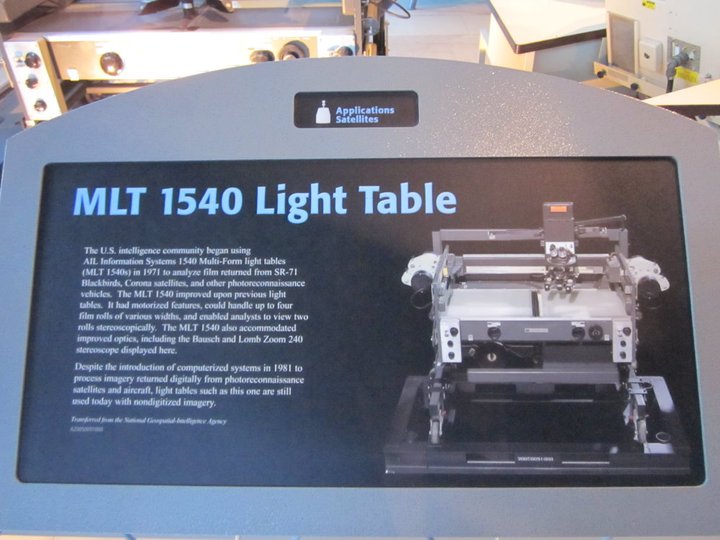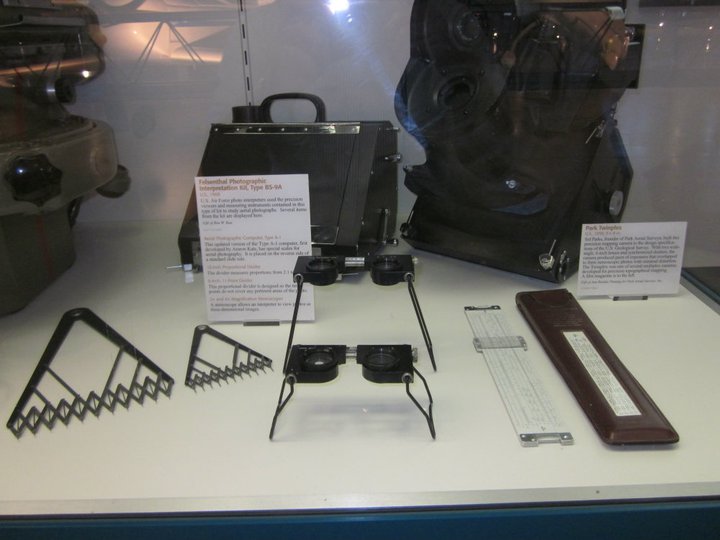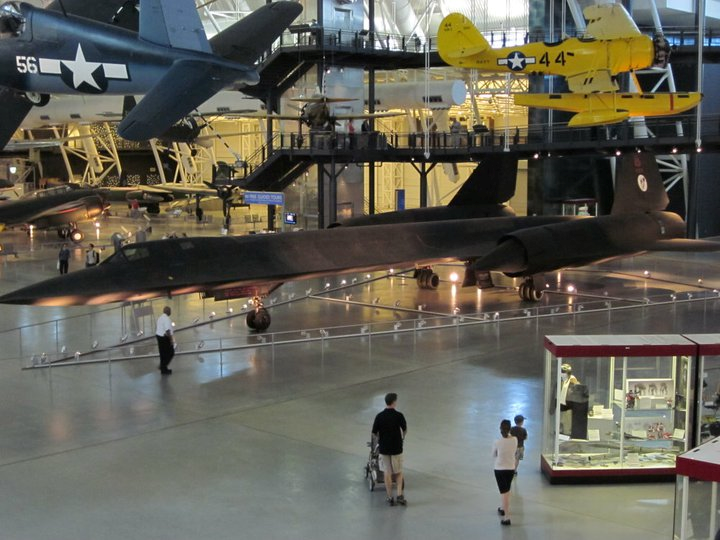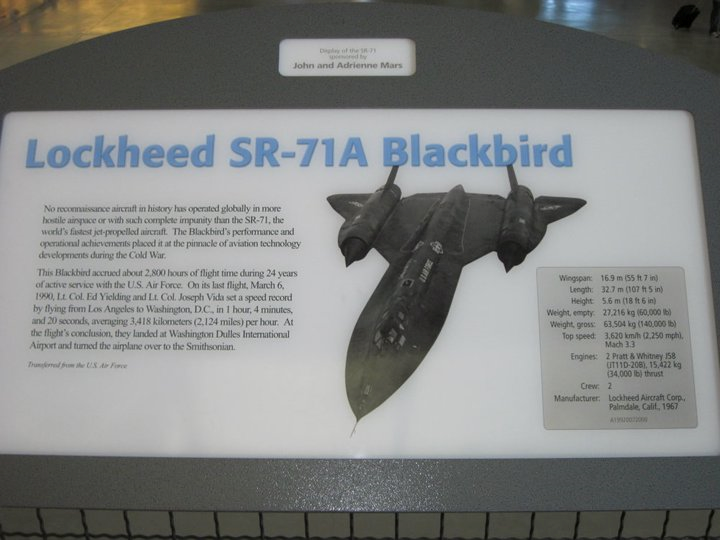The Photo Interpreters of the 548th RTG and 67th RTS era did not have the luxury of digital imagery and high speed computers to assist them. In about 1980, Photo Interpreters became Imagery Interpreters, since they now worked with more than photos, it was becoming a digital world. Many of the items that were included in the PI Kits of those days are probably not found today. Here is a look at what we used to do the mission.

A pair of 9-inch Italian scissors (which we nicknamed “Excalibur”) for cutting up film, a yellow Skilcraft-US government grease pencil for marking film, an actual slice of film, emblazoned with the 548th insignia, on an equipment repair request form, we kept the maintenance people busy reparing our light tables. (Photo and narrative courtesy of Allen Marsh)
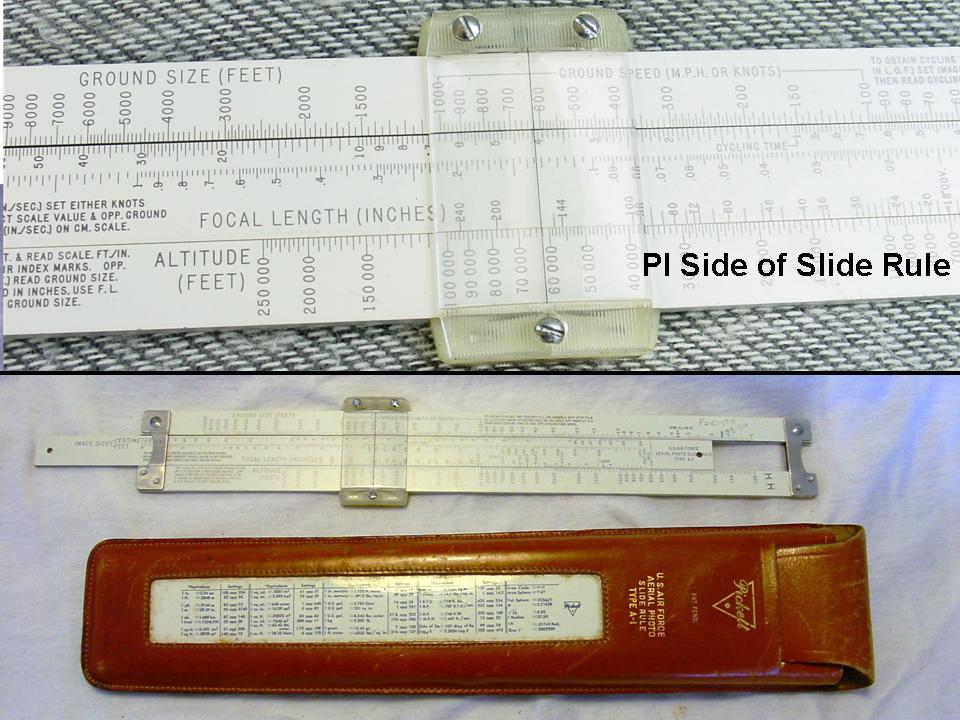
The PI Slide Rule. One side was a standard slide rule, which you learned to use in PI school, but probably forgot as soon as you graduated. The other side was the PI side, which any PI worth his salt knew how to use. It could be used for mission planning to calculate intervalometer settings and other data, which most seldom used. It’s main function was to determine the size of an object and the scale of the imagery. You could put in the altitude of the aircraft and focal length of the camera, to give you a scale, or measure a know object and put in that measurement and the know size of the object. It quickly got you in the ball park. Today you just move the cursor and it does the work for you. A little publicized extra of the slide rule is the PI was allowed to take it with him into the room when he took the Speciality Knowledge Test (SKT) for promotion. The admin guys running the test had no idea what it was or what it was suppose to have on it, so the PI’s would paste their formulas and other data neatly on the slide rule and did not have to burn up brain cells remembering them.
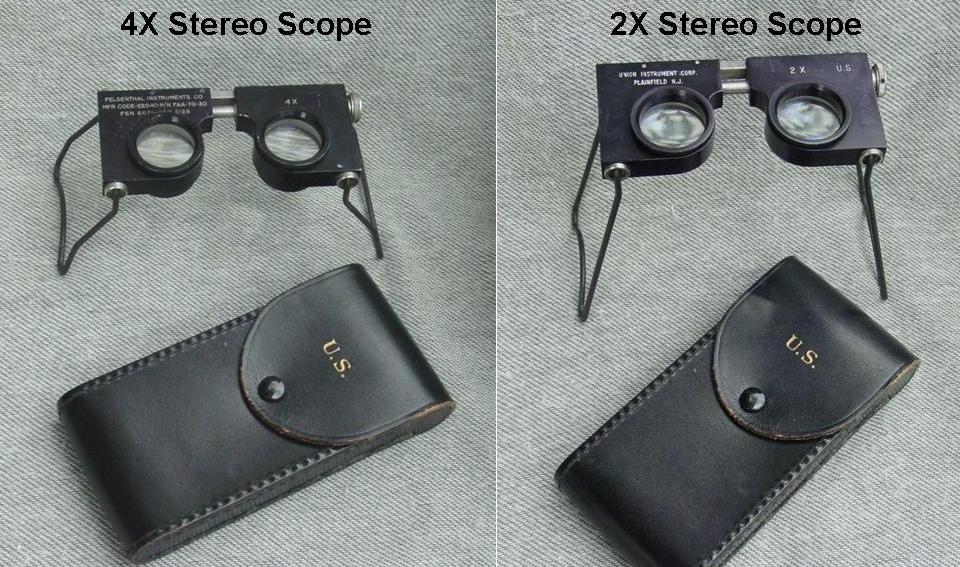
The Stereo Scope. Although not widely used at the 548th due to the availability of Baush and Lomb Zoom 240 and 500 stereo optics on the light tables, the stereo scope was a mainstay of the tactical PI, with the four power scope being the weapon of choice; the 2X scope was mainly good for viewing prints or other low resolution images. In Southeast Asia, the PI’s found that by taking the nut off the end of the scope, they could spread them far enough to see KS-72 frames in stereo, this made for more than a few headaches. The later PI kits introduced in the mid-70’s had a stereo scope that was dual 2X and 4X, they were not the greatest pieces of equipment. When the old kits were turned in, all supply wanted was the PI kit box, they did not care what was in it, so the resourceful PI’s stocked their desks with the old equipment.
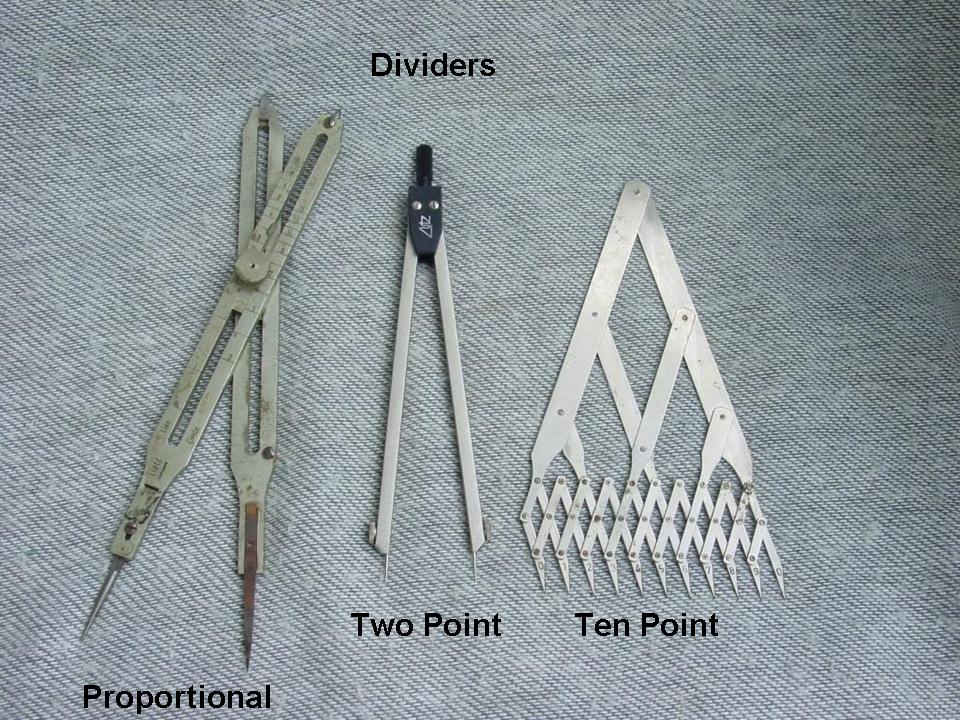
Dividers. The PI kit came with three dividers, The proportional dividers were a great idea, but seldom used by the PI, unless he could not find his two points. The two point (AKA fix point) dividers were great for measuring distances on a chart and transferring it to the map scale, plus many other tasks. The ten points were also a handy device, 50 Series charts only had minute marks ever five minutes, so if you did not have one of the geo coordinate templates that were locally made, you could use the 10 point divider (actually has 11 points, but provides 10 equal segments) to get a ball park coordinate. They also made good weapons in a gang fight.

Tube Magnifier. The tube magnifier is what the the PI used when he was scanning, if he spotted a suspicious looking blob, he could size it up with his lupe, if it looked promising, it then went under the Zoom 240 or Zoom 70 for a closer look. The PI kits in the 70’s came with a variable power tube magnifier, which was the size of a hand grenade, not the best thing to use on a long scan, so the 7X and 8X lubes remained the weapons of choice. The tube magnifiers also had a reticle for measuring, the wise PI would take it off and use it under the Zoom 240/70 to get things down to a gnat’s ass.

The Navigational Plotter and Box Wood Scale. The navigational plotter, better know as the Weems Plotter, was handy for getting bearings and in mission planning. At the 548th it generally served as a straight edge. The box wood scale was good for measuring longer distances and bigger objects, rarely did the scale we worked with allow us to use it.
Pocket PI Kit, everything you need on the road (Courtesy of the 67 RTS Website)
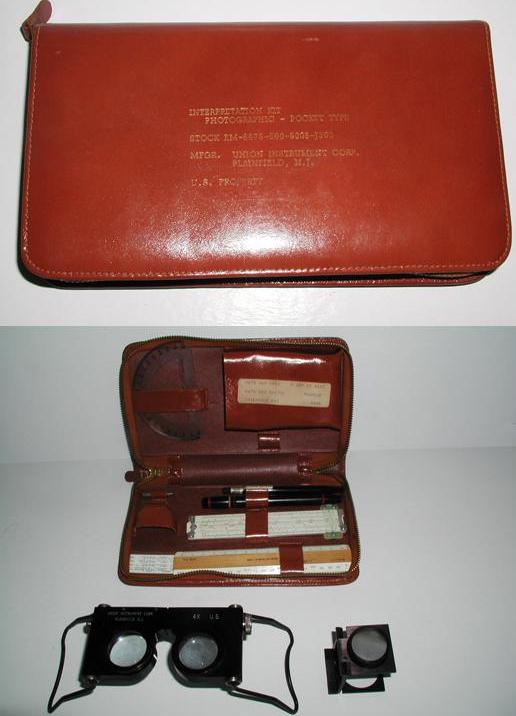
The MK-6B Dead Reckoning Computer. In PI school you learned to use this monster, but generally did a brain dump on it when you left school. It came with the earlier PI kits, but the newer kits did not have it. I remember MSgt Jimmy Rogers saying he was on a United Flight and calculated the Halfway to Hawaii Game using it and won, he must have impressed those seated around him.
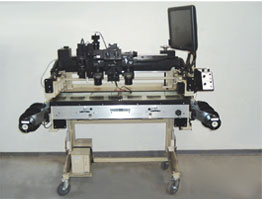
The Light Table. The light table was the mainstay of the PI until we went digital. This is a Richards MIM-4 with a BL Zoom 500, on the left, too high tech for some, many of us preferred the older MIM-3 and Zoom 240, on the right. The MIM-3 also had a slit and rollers in the middle, which, along with four motors, allowed you to mount two rolls of film on the table for stereo or comparison viewing. You could either use roll film or chips with the both light tables. When using rolls, you could tell the experienced PI’s, they would rewind the film at full speed across the table and then switch it off and get only one turn on the roll once the end of the film was reached. They also had a switch for the direction of the motor, it you had it switched wrong, you wound up with film across the floor.
(Courtesy of Ulrich Seike)
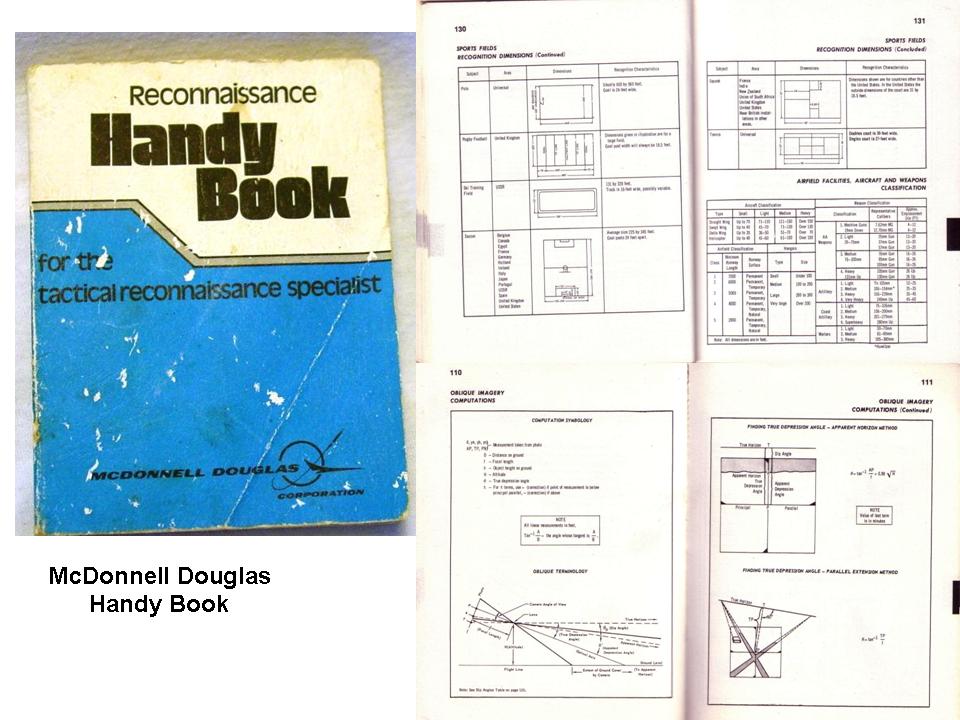
The Handy Book. Although not included in the PI kit, McDonnell Douglas put out a fine little pocket size booklet that had just about everything a PI needed to know in it, from all of the formulas you never used, to how big a tennis court is so you could use it for scaling imagery.
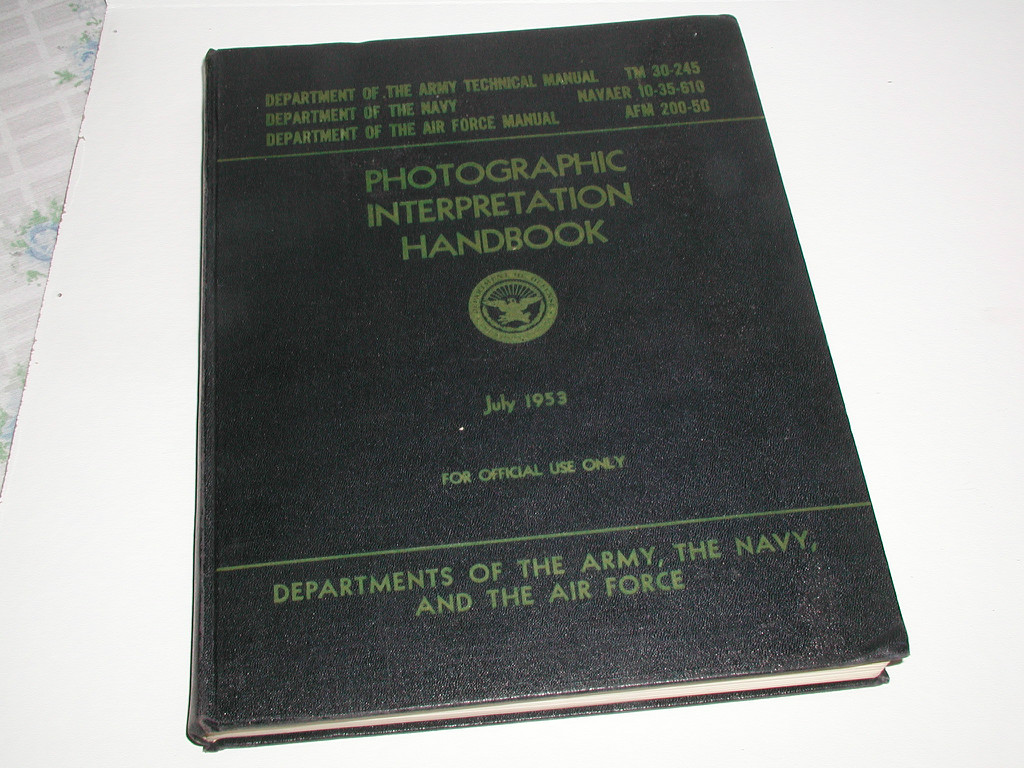
Armed Forces PI Handbook (Courtesy of the 67 RTS Website)

Another item not included in the PI kit, but was taught at the school house, was the code matrix block cheat sheet. The RF-4C recorded data in a very small block in binary code on each image, you need a magnifier to read the data. It included information on the date, unit, sensor, aircraft altitude, heading, pitch, roll, zulu time, geographic coordinates, and other information. This was not something we used at the 548th, but is included here for historical purposes.

If you had a new one striper PI in the office, you could always send him down to supply to pick up a couple bottles of cloud eradicator for the shop.
The following photos are of imagery collection platforms and equipment taken by Mark Olson at National Air and Space Museum Steven F. Udvar-Hazy Center near Dulles Airport, outside Washington D.C.:
